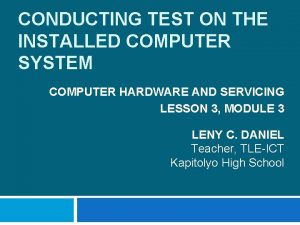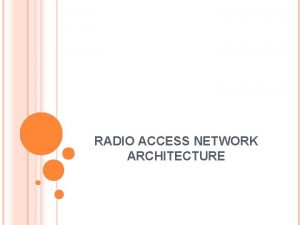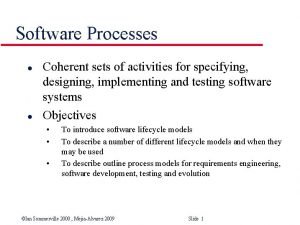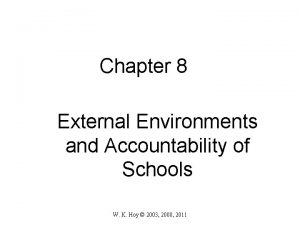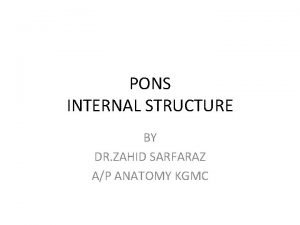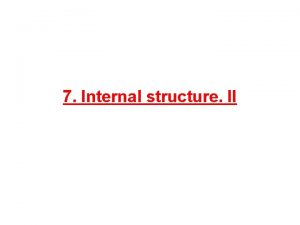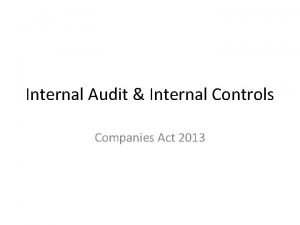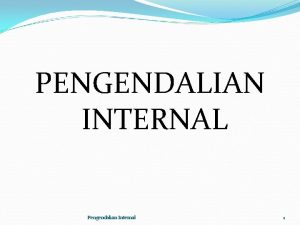STRUCTURE AND FUNCTIONALITY OF INTERNAL QA SYSTEM IN














- Slides: 14

“STRUCTURE AND FUNCTIONALITY OF INTERNAL QA SYSTEM IN KHMELNYTSKYI NATIONAL UNIVERSITY” Brief review of key points October 24, 2016 1

1. General information Kh. NU is a multidisciplinary university of fourth level accreditation; provides academic teaching in more than 40 specialties; educational qualification levels: Bachelor, Master, Ph. D and Doctor in science; more, than 7300 students; near 1000 academic and administrative staff. 2

2. Institutional QA Framework Kh. NU’s regulatory framework for internal quality assurance: Development strategy for 2016 -2020, (adopted in March 2016); Regulations on Internal QA System of educational activities and higher education (adopted in September 2016); Temporary Regulations on the Organizing Educational Process (adopted in January 2015); System of Internal Quality Assurance of Educational Activities in Khmelnytskyi National University: collection of normative documents (prepared by and published in the Kh. NU). 3

2. Institutional QA Framework Components of structure to support the internal QA processes: Department of quality assurance of higher education; Persons in charge of QA within university's units, who have also other responsibilities; Department responsible for staff evaluation/development; Quality committees on the Faculty level. 4

2. Institutional QA Framework Activities to cover by institutional quality assurance processes: Teaching and learning; Services to society; Research; Student support services. Activities that ensure the quality of researches: v. External peer review of research projects; v. Monitoring the impact factors of published articles; v. Preparing annually/periodical statistics on published articles; v. Defining key performance indicators for each research unit. 5

2. Institutional QA Framework Activities that ensure the quality of services to society: v. Defining key performance indicators for each research service ; v. Pre-selection processes in place for service society initiatives taken by HEI; v. Monitoring the number of cooperation agreements; v. Descriptions of service society related activities; v. Monitoring the number of patents, v. Periodical graduates feedback through technologies transfer agreements, etc; surveys or other activities. 6

3. Quality assurance processes in teaching and learning Law of Ukraine “On higher education” Regulations on internal QA system of educational activities and higher education ESG 2015 Decree of Cabinet of Ministers of Ukraine "On Approval of License conditions of educational activities of educational institutions 7

3. Quality assurance processes in teaching and learning The organizational structure of the internal quality assurance at the University 1 2 3 4 5 • Applicants for higher education • Departments • Faculties • Administrative departmments • Supervisory Board of the University 8

Academic Administra- Leadership, Students External Graduates staff tive staff institutional faculty/ stakeholders level department level Through formal participation in governance bodies (where members are entitled to vote) Through formal participation in consultation bodies Through formal involvement in self-evaluations or other evaluation activities By informally providing information on the issues at stake By responding to the surveys on a regular basis They are not involved x x x x x x 9

4. Approval, monitoring and periodic review of programmes and awards Educational programmes and curriculums are prepared by working groups with informal involving external stakeholders; They are publicly available; The curriculum and programme contents, pedagogical approaches and intended learning outcomes are evaluated as part of an external accreditation process; Educational programmes and curriculums are approved by University. 10

5. Student assessment University uses the following student assessment procedures v designed to measure the achievement of the intended learning outcomes and/or other programme objectives; v have clear and available for public criteria for giving grades v have clear, pre-defined examinations or other assessment methods in place; v have clear regulations covering student absence, illness and other circumstances; v ensure that assessments are conducted securely in accordance with the institution’s stated procedures; 11 v the administration checks that the assessment procedures are followed.

Quality assurance of teaching staff 6. Quality assurance of teaching staff • The competence of teaching staff is defined through formal requirements. • Teachers must have research qualifications. • University uses annual procedures to assess research results. • Mandatory pedagogical training is organized for teachers. • If teacher’s activity is ineffective, university has procedures to remove a teacher from his/her duties. • Information about teacher effectiveness is publicly available for academic staff. 12

7. Learning resources, student support & Information systems University regularly offers, monitors, evaluates all of learning resources. University has procedures for monitoring individual students’ progression. University has an information system used for the effective management of all kind of activities. University informs the public about the results of evaluations. 13

Thank you for attention, Project team of Khmelnytskyi National University 14
 Data mining functionality
Data mining functionality Loopback
Loopback Which is not ranap functionality
Which is not ranap functionality A coherent set of related functionality
A coherent set of related functionality Sgb functionality tool
Sgb functionality tool Jquery functionality
Jquery functionality For full functionality
For full functionality Introduction to internal control
Introduction to internal control Features of vouching
Features of vouching Draw and label the parts of an egg.
Draw and label the parts of an egg. Is earth an open or closed system
Is earth an open or closed system Circularory system
Circularory system External publics of a school
External publics of a school What is zero morpheme
What is zero morpheme Substantia ferruginea
Substantia ferruginea

